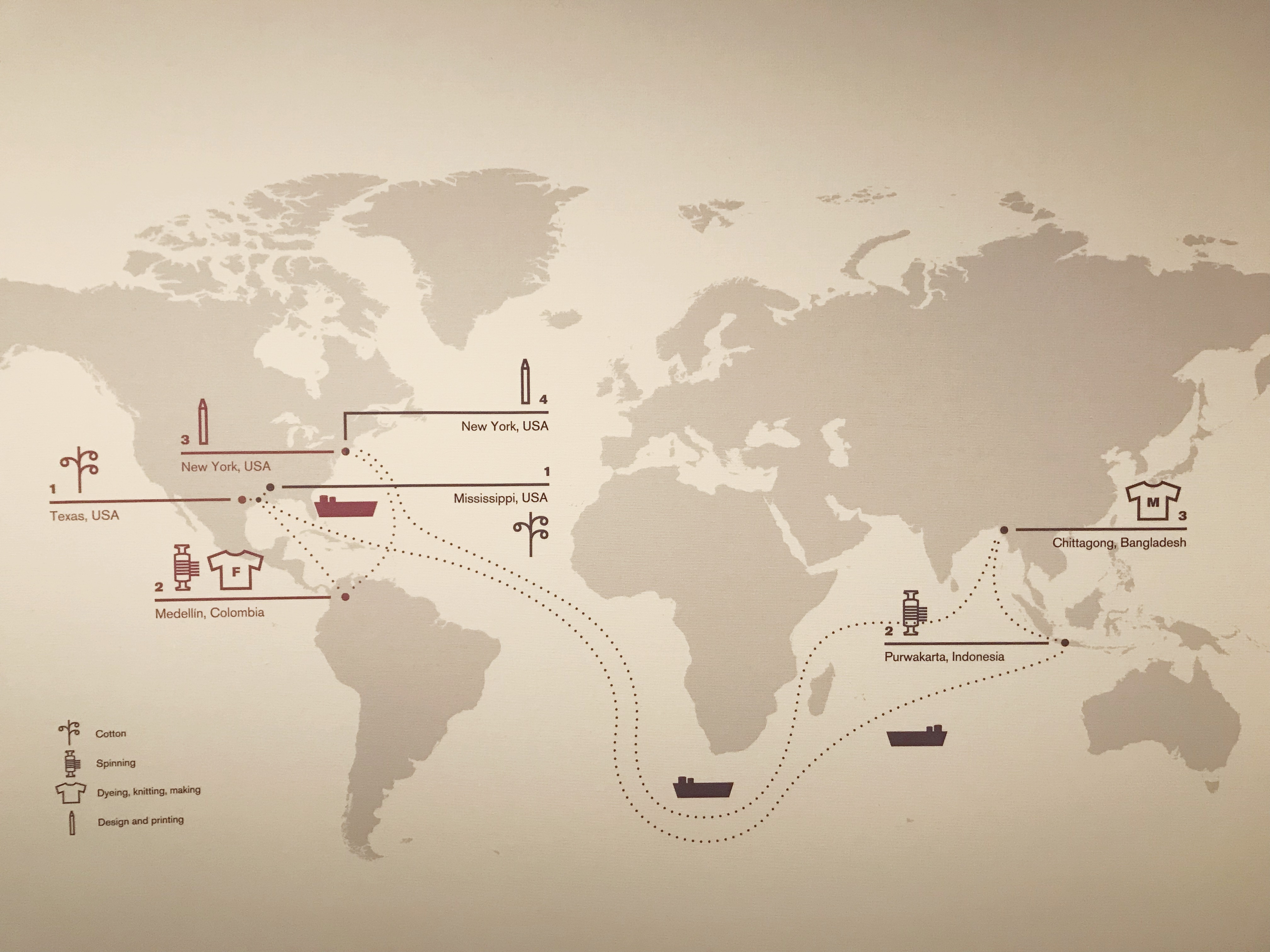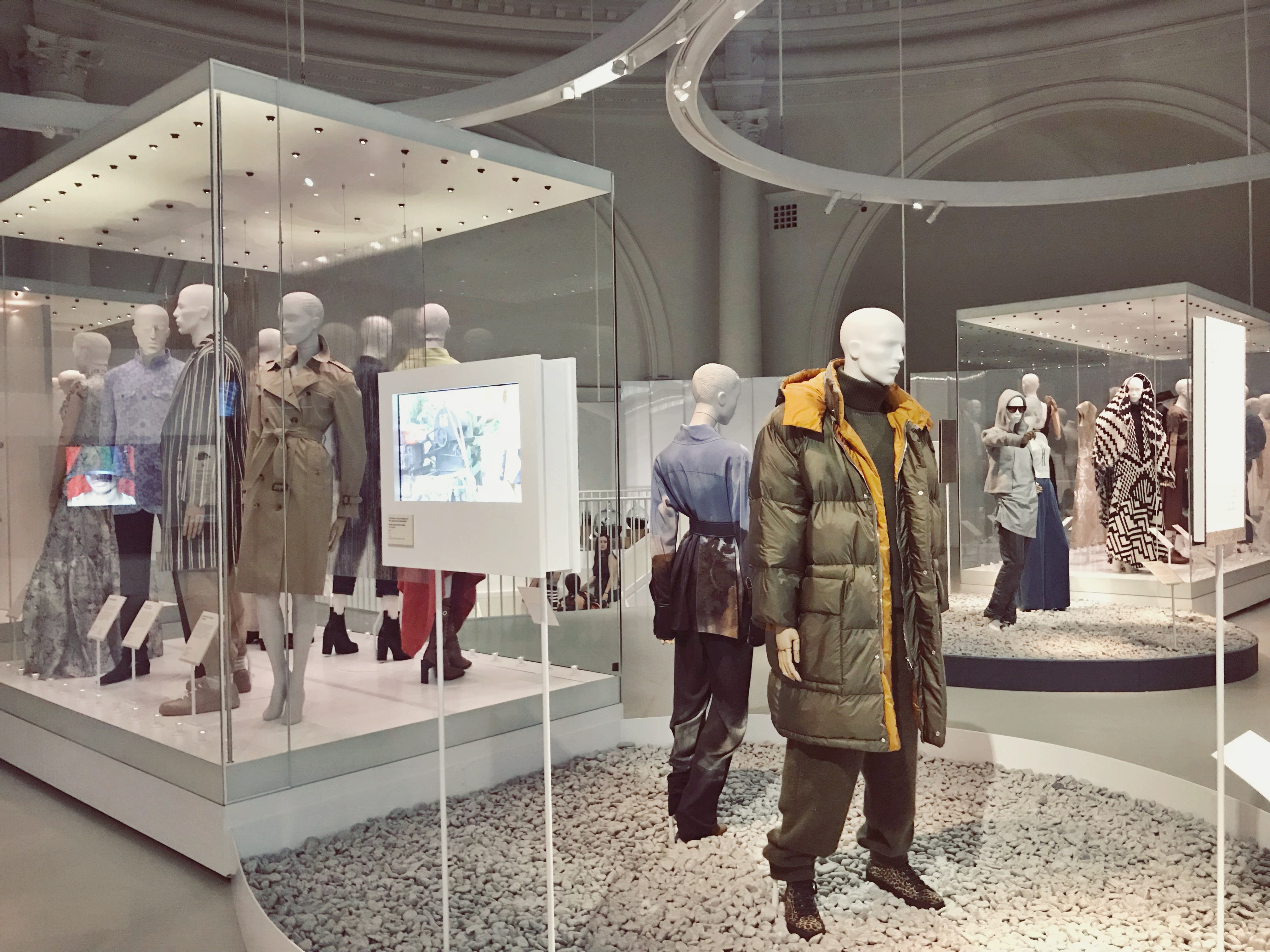The Victoria & Albert Museum (V&A) in London has most definitely stepped up its game over the last few years with an increasing number of interesting exhibitions that touches on subjects such as popular culture as well as the issues and challenges of our time.
One of its current exhibitions, Fashioned from Nature, is a detailed, educational and inspirational take on fashion and its use and exploitation of nature. I visited the exhibition when in London this summer and was impressed by the sheer amount of clothes as well as the extensive information on innovation in fabrics.
The curator, Edwina Ehrman says in this video that she had always wanted to do an exhibition on the relationship between fashion and nature and the idea was that the focus was going to be more towards the ways fashion has been inspired by nature. But the result has got equal measures of how fashion has used and exploited nature. It talks about how the natural world has for centuries provided inspiration for designs, and how natural materials such as wool and linen have been used for a long time. But it also touches on how the use of ivory, feathers and jewel beetle wing cases to decorate fashion pieces quite quickly led to over hunting and animal cruelty, and how a growing textile industry led to pollution and environmental issues.

Fabric innovation is all the rage at the moment, with companies across the world looking at new, better, more environmentally friendly ways of creating fibres that can be used to create clothing materials. Fashioned from Nature is an excellent history lesson in what’s been used over the years, how the usage has developed, how we’ve started creating fashion from plastic (from oil), and how we’re now developing more sustainable fabrics such as Tencel (from sustainable softwoods). It also shows us that techniques used way back, such as creating fabrics from pineapple fibres in the early 19th century, are now being picked back up by the likes of Ananas Anam with its Pinatex products.
There is some stunning fashion on display. Extravagant dresses and beautiful pieces inspired by nature. Emma Watson’s dress from the 2016 Met Gala created with sustainability in mind by Calvin Klein. The importance of showing good fashion was always curator Edwina’s intention as she says “the only way sustainability is going to win through is if the sustainable garments are of high fashion values”.
Ultimately, V&A’s exhibition is meant to make us think, as Edwina also says that “if we know what our clothes are made from and how they were produced we can make better choices”, and I would definitely say it succeeds. I was obviously already interested in the topic and am also fairly well-informed about the challenges the exhibition brings to the table, but I really enjoyed the mix of history, material education, and environmental commentary. The history aspect of how fabrics travelled the world back in the day is also compared to the excessive supply chains of today’s fashion (see below), so there are multiple issues we’re faced with as we work our way through the exhibition.

A lot of it is rather depressing as it shows how we’ve destroyed species and the environment but as we reach the end there is a strong focus on innovation and new approaches to production and consumption. It’s a huge challenge but as fashion plays such a central part in society, and, as the exhibition shows, has been used many times before as a tool for activism and change, there is remit and opportunity to create a different future.

I bought the exhibition book and I’m really glad I did. It’s beautiful and includes everything from the exhibition and more so it’s most definitely a book I will continue reading from – if it’s just to get inspired by the pictures or get educated from the various chapters covering fashion and fabric developments over the last 400 years.

Taking the time to understand what our clothes are made of should be the norm, but in today’s society of fast fashion, it’s not. We cover our bodies in our clothes though so surely we should ensure they’re safe and ideally natural? But if brands don’t provide this information and it’s not really talked about then how are we supposed to know? It’s obviously great that the V&A brings these questions to the public eye, showing that it’s a trend – even a movement – at the moment, but brands should take more pride in showing how our clothes have been made. Showing what’s inspired them, what materials they’re made with, and who made them. It’s a matter of transparency but also an appreciation of the craftsmanship that has gone into creating them and an encouragement towards treasuring and looking after them. This requires a shift from fast fashion to slow fashion and we’re definitely not there yet, but things are happening. Whether it’s something you talk about with your friends, or read on a blog, or explore at one of London’s most important art and design institutions, it doesn’t quite matter. The important thing is to keep learning, keep thinking about these things, to be able to stay conscious and make better decisions next time we’re considering buying a new piece of clothing.

The exhibition is on at the V&A until 27 January 2019 and is most definitely worth a visit if you’re in London.

